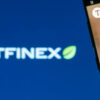
Cardano (ADA) is rapidly gaining recognition as a key player in the world of decentralized finance (DeFi). With its unique proof-of-stake consensus mechanism, smart contract capabilities, and focus on scalability, Cardano is positioned to become a major hub for DeFi applications. In this article, we’ll explore the growing relationship between Cardano and DeFi, examining the features that make Cardano ideal for DeFi projects and its potential to reshape the financial landscape.
What Is Decentralized Finance (DeFi)?
Decentralized Finance (DeFi) refers to a financial system built on blockchain technology that operates without intermediaries like banks or financial institutions. DeFi allows users to access services such as lending, borrowing, trading, and earning interest on digital assets, all through decentralized applications (dApps) and smart contracts. By removing the need for middlemen, DeFi aims to create an open, transparent, and efficient financial ecosystem accessible to everyone.
Cardano’s Key Features for DeFi
- Proof-of-Stake (PoS) Consensus
- Ouroboros Protocol: Cardano’s PoS protocol, known as Ouroboros, offers an energy-efficient and secure way to validate transactions. In contrast to the energy-intensive proof-of-work (PoW) used by platforms like Bitcoin and Ethereum (pre-merge), PoS requires significantly less computational power, making Cardano a more sustainable and scalable option for DeFi applications.
- Staking and Rewards: ADA holders can participate in staking, where they delegate their tokens to validators and earn rewards for helping secure the network. This incentivizes ADA holders to actively engage with the ecosystem while also contributing to network security.
- Smart Contract Functionality
- Plutus Framework: Cardano’s smart contract platform, Plutus, enables developers to create and deploy complex DeFi applications. Plutus is designed for security and precision, leveraging the Haskell programming language to ensure smart contracts are reliable and less prone to bugs or vulnerabilities.
- Marlowe for Financial Contracts: Cardano also offers Marlowe, a domain-specific language tailored for financial contracts. Marlowe simplifies the process of creating financial agreements, making it easier for users without programming experience to interact with DeFi.
- Scalability and Efficiency
- Basho Phase: The ongoing Basho phase focuses on improving Cardano’s scalability. By implementing sidechains and layer 2 solutions like Hydra, Cardano aims to increase transaction throughput and reduce fees, making the platform capable of supporting a growing number of DeFi applications and users.
- Low Transaction Costs: Cardano’s efficient network design results in lower transaction fees, which is crucial for DeFi applications that require frequent interactions with the blockchain. This makes Cardano more accessible to users and developers alike.
- Security and Formal Verification
- Formal Verification: Cardano places a strong emphasis on formal verification, which involves mathematically proving the correctness of smart contracts. This rigorous approach ensures that DeFi applications built on Cardano are secure and function as intended, minimizing the risk of exploits or bugs.
- Research-Driven Development: Cardano’s development is peer-reviewed and backed by academic research. This ensures that any new upgrades or features, including those related to DeFi, are thoroughly vetted for security and effectiveness.
Cardano’s Expanding Role in DeFi
- DeFi Applications on Cardano
- DEXs (Decentralized Exchanges): Decentralized exchanges are a cornerstone of DeFi, allowing users to trade cryptocurrencies without relying on centralized platforms. Cardano-based DEXs like SundaeSwap and Minswap are emerging to facilitate seamless token swaps and liquidity provision on the network.
- Lending and Borrowing Platforms: DeFi lending protocols enable users to lend their assets and earn interest or borrow against their crypto holdings. Cardano’s robust smart contract infrastructure supports the development of these platforms, providing users with secure and transparent alternatives to traditional financial services.
- Stablecoins: Stablecoins are integral to DeFi, providing a stable medium of exchange. Cardano is expected to see the introduction of native stablecoins, which will facilitate DeFi activities such as lending, borrowing, and yield farming within the Cardano ecosystem.
- Interoperability with Other Blockchains
- Cross-Chain Compatibility: Cardano’s focus on interoperability enables DeFi applications on its platform to interact with other blockchains. This cross-chain functionality will allow users to move assets seamlessly between Cardano and other networks like Ethereum and Bitcoin, enhancing liquidity and expanding DeFi opportunities.
- ERC-20 Converter: Cardano’s ERC-20 converter allows tokens from Ethereum to migrate to the Cardano blockchain. This feature opens up new possibilities for Ethereum-based DeFi projects to transition to or operate on Cardano, bringing more liquidity and users into the ecosystem.
- Decentralized Governance
- Project Catalyst: Cardano’s decentralized governance model, known as Project Catalyst, empowers the community to propose and vote on DeFi projects. This democratic approach ensures that the development of Cardano’s DeFi ecosystem aligns with the needs and interests of its users.
- Community-Driven Innovation: As more users participate in Cardano’s governance, the platform’s DeFi ecosystem will continue to evolve with new ideas, innovations, and applications being funded and developed through community input.
Predictions for Cardano’s Future in DeFi
- DeFi Growth on Cardano
- Increased Adoption: With the introduction of smart contracts and scaling solutions, Cardano is poised to see a significant increase in DeFi adoption. As more developers and users migrate to Cardano, the network will become a hub for a wide range of DeFi applications, from decentralized exchanges to complex financial instruments.
- Mainstream Use: Cardano’s low fees, scalability, and focus on user-friendly financial contracts will make it an attractive platform for mainstream adoption. As traditional financial institutions explore blockchain integration, Cardano’s DeFi ecosystem could bridge the gap between decentralized and traditional finance.
- DeFi Ecosystem Expansion
- New DeFi Projects: As Cardano’s ecosystem matures, we can expect an influx of innovative DeFi projects that leverage the platform’s unique features. From decentralized insurance protocols to new stablecoins, the diversity of projects will continue to grow, enhancing Cardano’s position in the DeFi space.
- Partnerships and Collaborations: Cardano’s emphasis on interoperability and partnerships will lead to collaborations with other blockchains and financial institutions. This will expand the reach and utility of DeFi applications on Cardano, driving further adoption and integration.
Conclusion
The relationship between Cardano and decentralized finance (DeFi) is growing stronger as the platform’s capabilities expand. With its focus on scalability, security, and interoperability, Cardano is well-positioned to become a leading platform for DeFi applications. As new projects launch and the ecosystem matures, Cardano’s role in the DeFi landscape will only continue to grow, bringing new opportunities for developers, users, and investors alike.










